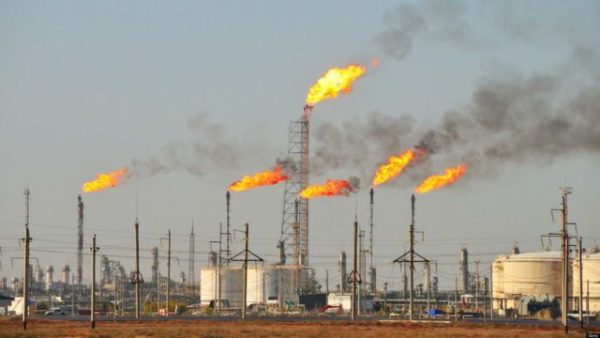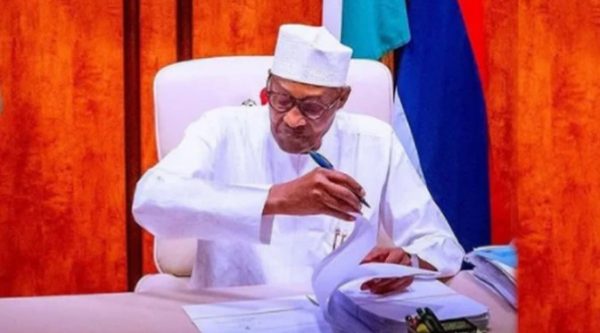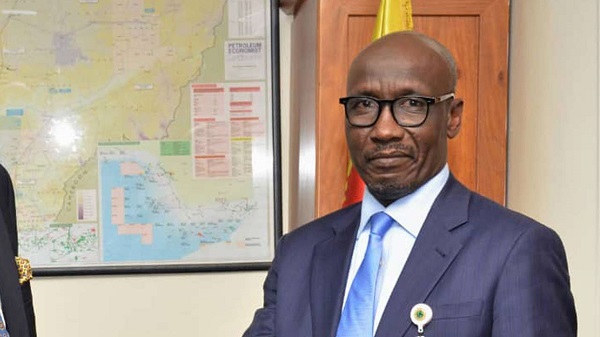Nigeria’s $510m gas flare in days higher than host-community allocation

•US, AfDB, Osinbajo back funding projects
•Award of 45 gas flare licences in limbo four years after
Nigeria has, in the first 152 days of this year, flared about 85.4 billion standard cubic feet of natural gas, translating to monetary loss of about $510 million (N209 billion), a figure, averaging the three per cent funding to host communities in the 2021 Petroleum Industry Act.
Coming amid pressure to stop funding of gas as the global price of the commodity hit $6 yesterday, the prevailing global pressure, particularly fuelled by developed countries to transit to cleaner fuel meant that Nigeria’s 206 trillion standard cubic feet of proven natural gas may remain in the ground.
If the move for the defunding of gas becomes a reality, the Federal Government may remain a loser as goals of the Nigerian Gas Flare Commercialisation Programme (NGFCP) are yet to be realised four years after.
Standing as one of the top 10 gas flaring countries in the world after failing series of promises to bring an end to a menace that threatens health and environment of oil producing region, Nigeria’s gas flare rate was 7.73 per cent in January, translating to 554.01mmscfd.
The Nigerian National Petroleum Corporation Limited, in February, reported that the country’s gas flare rate was 7.67 per cent, meaning 565.52mmscfd compared with an average gas flare rate of 7.12 per cent (i.e. 529.20mmscfd) in February 2020.
Gas flare rate was 9.50 per cent for the month of March, which stood at 671.13mmscfd compared to the average gas flare rate of 7.25 per cent i.e. 532.37mmscfd for the period of March 2020.
Gas flare rate was 9.74 per cent for April, translating to 670.19mmscfd compared with average gas flare rate of 7.42 per cent (i.e. 542.22mmscfd) for the period of April 2020.
In May, out of the 216.29bcf of gas produced, a total of 133.56bcf was commercialised, consisting of 44.02bcf and 89.54bcf for the domestic and export markets respectively. About 38 per cent, 83 billion cubic feet was flared or re-injected, NNPC Limited said in its monthly operation and financial report.
The flare totalled 85.4 billion standard cubic feet. Considering that one million British Thermal Units (BTU) sold for about $6 yesterday at the international market, the 85.4 billion standard cubic feet flared by Nigeria stands at about 85 million BTU, which translates to $510 million.
The five-month flare is therefore higher than $500 million projected as the three per cent average funding for the host community in the Petroleum Industry Act.
Last month, the future of natural gas jumped by about 17 per cent. It has doubled in the last six months. Yesterday, natural gas sold for $6.18 per million BTUs, dropping by 0.18 per cent as of mid-day. The last time the price was this high was 2014.
Currently, Nigeria’s gas reserves were discovered by mere accident as the current deposit was found while industry players search for oil. At that, gas reserves outweigh crude oil reserves. Usually re-injected, captured or flare, there’s been serious criticism over continuous flaring of the resources.
By flaring, rather than utilising gas for power generation or other domestic needs, Nigeria and other nations involved in such an act, could have accumulated losses up to $82bn a year due to global gas flaring, says GlobalData report.
The report identified biggest countries involved in gas flaring and accounting for over 87 per cent of all flared gas in 2020, to include Nigeria, Algeria, Angola, Indonesia, Iran, Iraq, Libya, Malaysia, Mexico, Russia, the US and Venezuela.
After years of criticism over impacts of gas flaring on oil communities and revenue loss, in 2016, the Federal Government launched the NGFCP, stating, thereafter, that about 178 flare sites were discovered as about 45 licenses were screened for award.
Earlier this year, the Minister of State for Petroleum Resources, Timipre Sylva, who blamed the delay of the scheme on the recent marginal bid round said the licences would be awarded in June but the move remained a mirage.
A top government official at the Ministry of Petroleum Resources told The Guardian that the scheme, initiated by former Minister of State for Petroleum, Ibe Kachikuwu, hit a deadlock immediately it was moved from the ministry to the defunct DPR.
The defunct DPR had failed to respond to a series request from The Guardian on the development as the office is currently battling the heat of transition of the PIA.
Although Sylva had said gas flaring had reduced to about eight per cent in the country, approximately 90.9 billion cubic feet of natural gas was lost to gas flaring in the first five months of 2020. The loss was valued at $230 million.
Government-run satellite tracker by National Oil Spill Detection and Response Agency (NOSDRA), showed that 1.8 billion standard cubic feet (scf) per day of gas was flared in the last nine years. The figure, which should have attracted about $3.6 billion in penalty, could generate 179.9 thousand GWh.
While the prevailing development persists, Vice President Osinbajo is being backed by some US experts and the President of AfDB to drum up support for investors to keep funding of gas on track to enable developing economies like Nigeria to harness existing resources.
The Presidency in a release signed by Senior Special Assistant to the President on Media and Publicity, Laolu Akande noted that a continental and international rally was gaining ground in support of Nigeria’s advocacy to halt plans to defund gas projects.
He quoted the Vice President for Power, Energy, Climate and Green Growth at the African Development Bank, Kevin Kariuki as saying that gas must be seen to be a transitional fuel for Africa, adding that Africa needs to increase its energy access.
Osinbajo had advocated for a just transition to global net-zero emissions, particularly calling on multilateral agencies, and western countries to stop the planned defunding of gas projects in developing countries.
“we are looking at commercial options and climate finance facility is one that we are trying to pay attention to,” Osinbajo had said,
Renowned energy scholar at the University of Ibadan, Adeola Adenikinju stated that while Nigeria’s efforts to develop gas to power economic development is encouraging, strategies towards ending gas flaring must be implemented with consideration on the various options that have been put forward.
An energy expert, Michael Faniran noted that while increasing gas price at the international market poses gains for Nigeria, maximising the benefits of the gas era may remain elusive if the country takes decisive actions.
“Nigeria has made various attempts at doing this and I believe now is the time for us to consolidate and make sure we complete projects that will lead to gas-based industries.” he said.
According to him, the PIA could offer leeway given that it will encourage investors to take final investment decisions on gas related projects.
Faniran noted that the fiscals in the PIA could create a win-win situation, stressing that proper implementation is however necessary.
An energy lawyer, Emeka Okwuosa said while funding for gas is being threatened, the Federal Government must become innovative, adding that it was high time to move beyond talks into creating friendly options for investment.
Okwuosa noted that it remained worrisome for gas flaring to have continued unabated, blaming the situation on the lack of seriousness on the part of the Government to enforce the rules and ensure compliance with the penalty of fines.
“The Federal Government has been so lax in applying the penalties and enforcing the penalties. No wonder the oil majors are owing humongous amounts to the Federal Government. Government has to be proactive and stop gas flaring,” he said.
The Chairman, Seplat Energy Plc, Dr. ABC Orjiako, said Nigeria cannot afford to not utilize its over 200Tcf of gas reserves in the bid to address the UN SDG7 as it pertains to universal energy access.
Noting that the gas reserves would leapfrog the transition, Orjiako stated that the continuous discordant tunes across reflects the uncoordinated approach to the development.








